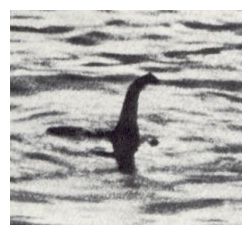
© Wikimedia Commons
For the first time, a comprehensive database of all reported sightings of the Loch Ness monster is being complied.
The creators of the Nessie Files hope their work will shed light on the hundreds of strange sightings of the mythical creature.
Dr Charles Paxton, an ecologist and statistician at St Andrews University, who is carrying out the project, has so far uncovered around 853 reported encounters with Nessie over the past 80 years.
He will undertake a statistical analysis to see if there are any distinct clusters or patterns which could be explained by natural phenomena, such as a site where unusual waves are frequently formed.The project will be discussed at a conference taking place as part of the Edinburgh International Science Festival, which Paxton has organised to mark the 80th anniversary of the first "modern" sighting of the monster.
In April 1933, an article in the
Inverness Courier described how locals Aldie and John Mackay were driving along the north-western shore of Loch Ness when they were confronted by an "enormous beast". It was the first recorded encounter with the creature since the sixth century - when, according to legend, St Columba drove it into the water - and soon sparked further sightings and huge interest globally.
In 1934, Nessie became a global phenomenon when what was thought to be a picture of the monster's head and neck emerging from the loch were published. The images - taken by a Dr Robert Wilson and known as "the surgeon's photograph" - were later proven to be fake.
Paxton says he has trawled newspaper reports, books and unpublished files from organisations including the Loch Ness Investigation Bureau of the 1960s and 1970s to collate the 853 "distinct encounters". He said: "I am looking at the last 80 years' worth of Loch Ness sightings report data and asking the question: does it form into any natural clusters, in terms of what is seen? Other people have catalogued some of the reports, but I am trying to get everything that has ever been written down, so it is a pretty comprehensive database."
He added: "There are distinct types of report that cluster together. I suspect some of those clusters represent natural phenomena, like a wave." Paxton, who is aiming to publish a scientific paper on his work, said it was easy to forget the impact of the Mackays' sighting. He said:
"Apparently, Inverness council had a tourism budget in 1933 and 1934, but in the end they decided to get rid of it as they didn't need it [to attract visitors]. There were traffic jams all around the loch. It was in newspapers all around the world." He said he did not believe most witnesses were lying about seeing the creature, but added: "Nevertheless, I don't think there is a large unknown animal in Loch Ness."
"Conference co-organiser Gordon Rutter said around half of the speakers taking part are sceptics who do not believe in the monster as a "physical living being", while the other half are "believers". He said: "There is the romantic in all of us, I suspect - a monster living nowadays relatively close to a major population is just a cool idea - a bit out of the ordinary from our everyday lives. People claim [to have seen it] and we can't just dismiss the claims out of hand."

Reader Comments
to our Newsletter